
To view this presentation, click on this link.
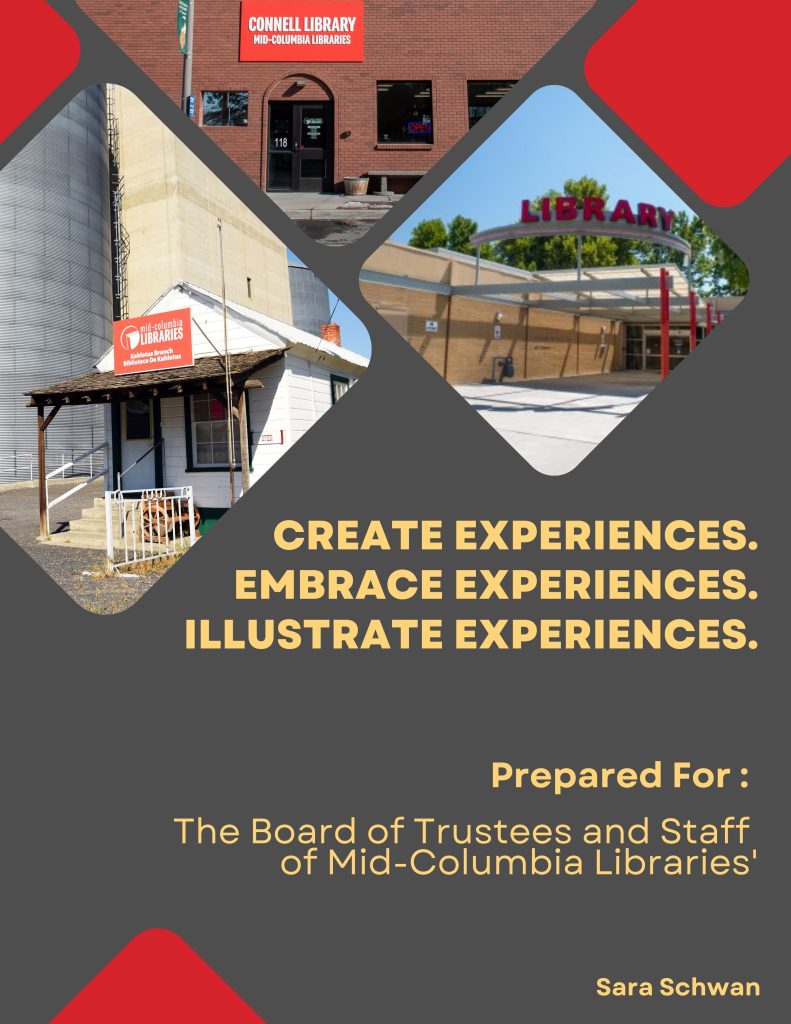
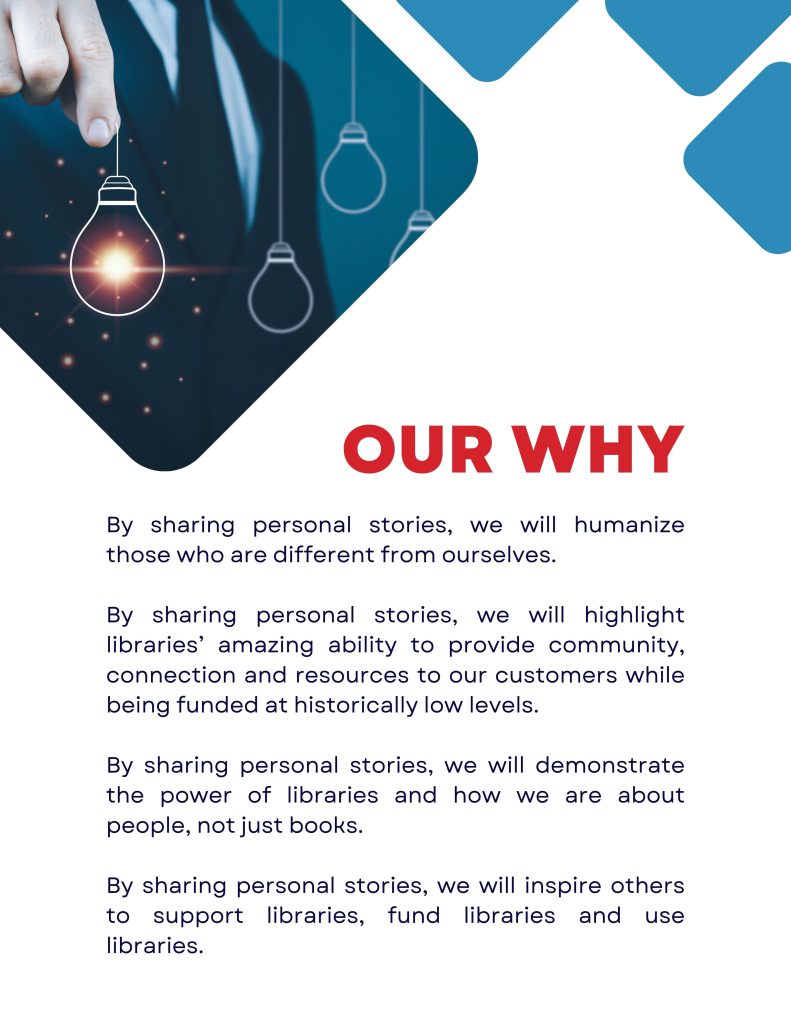

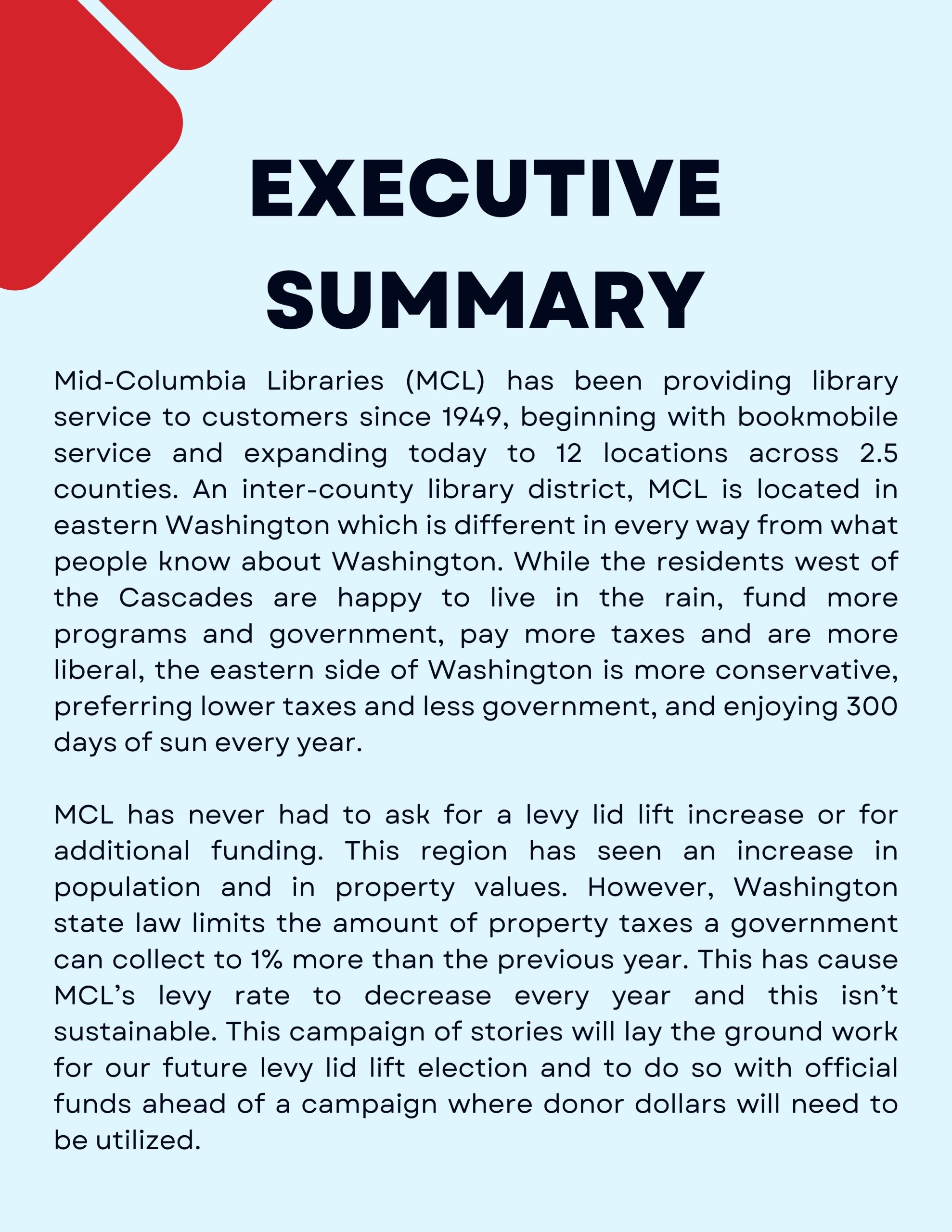
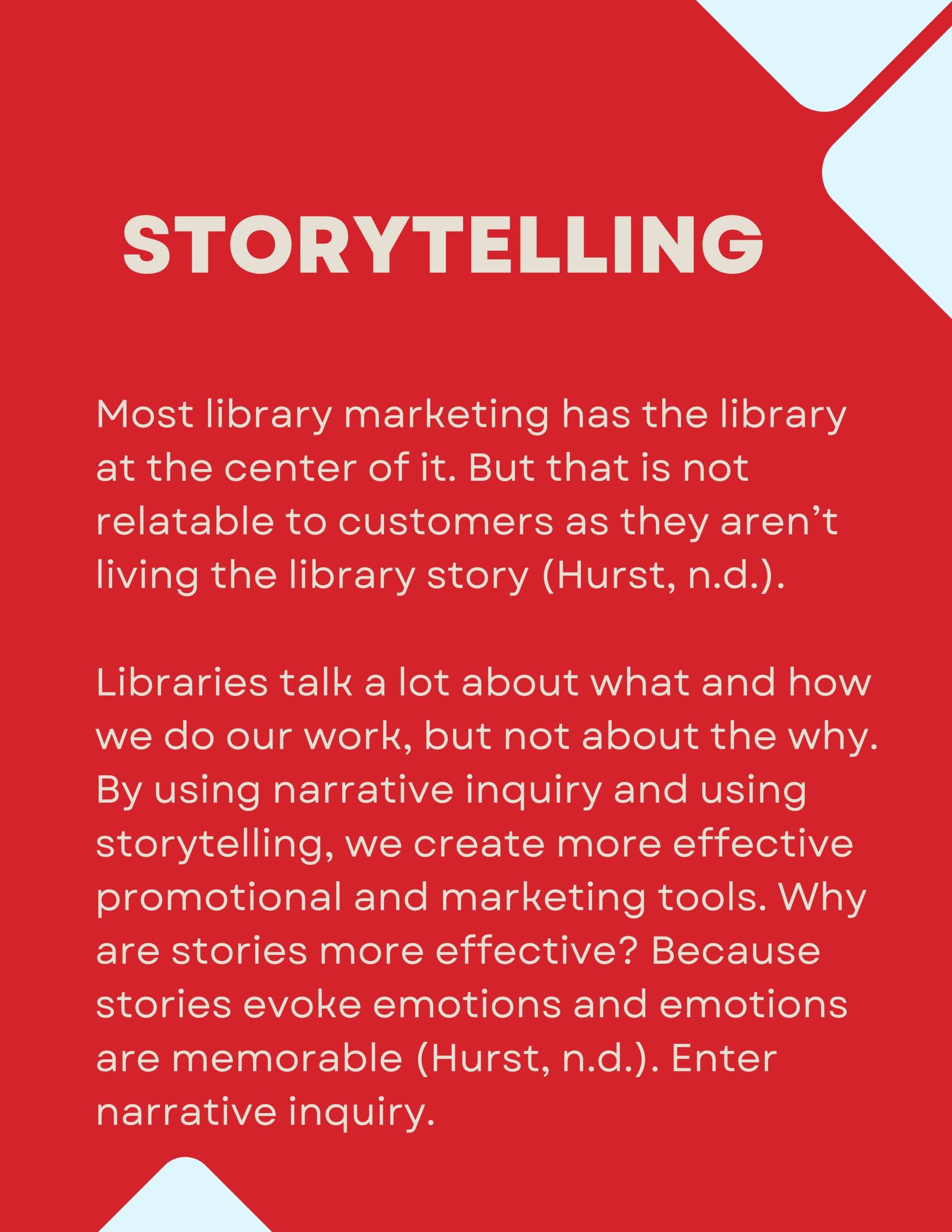

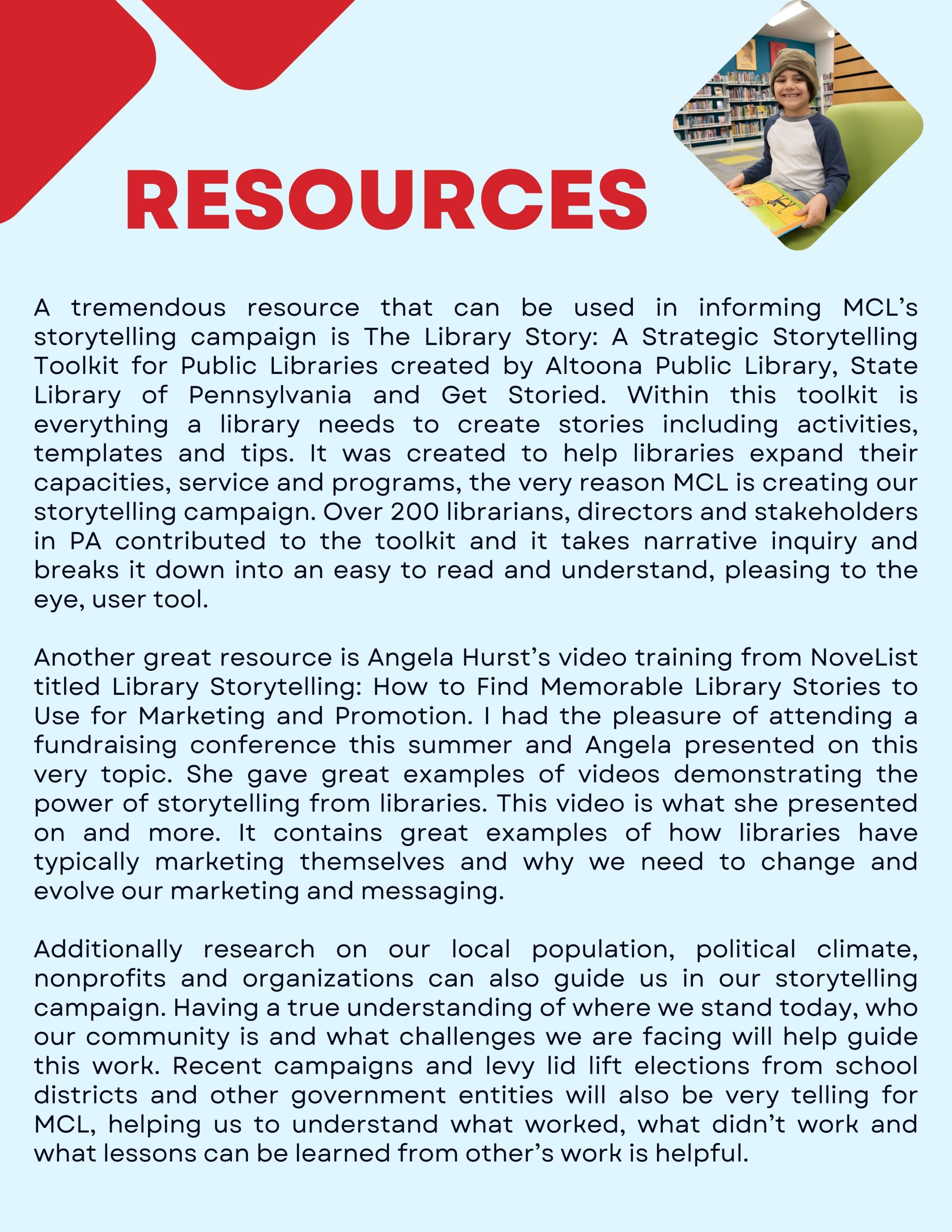
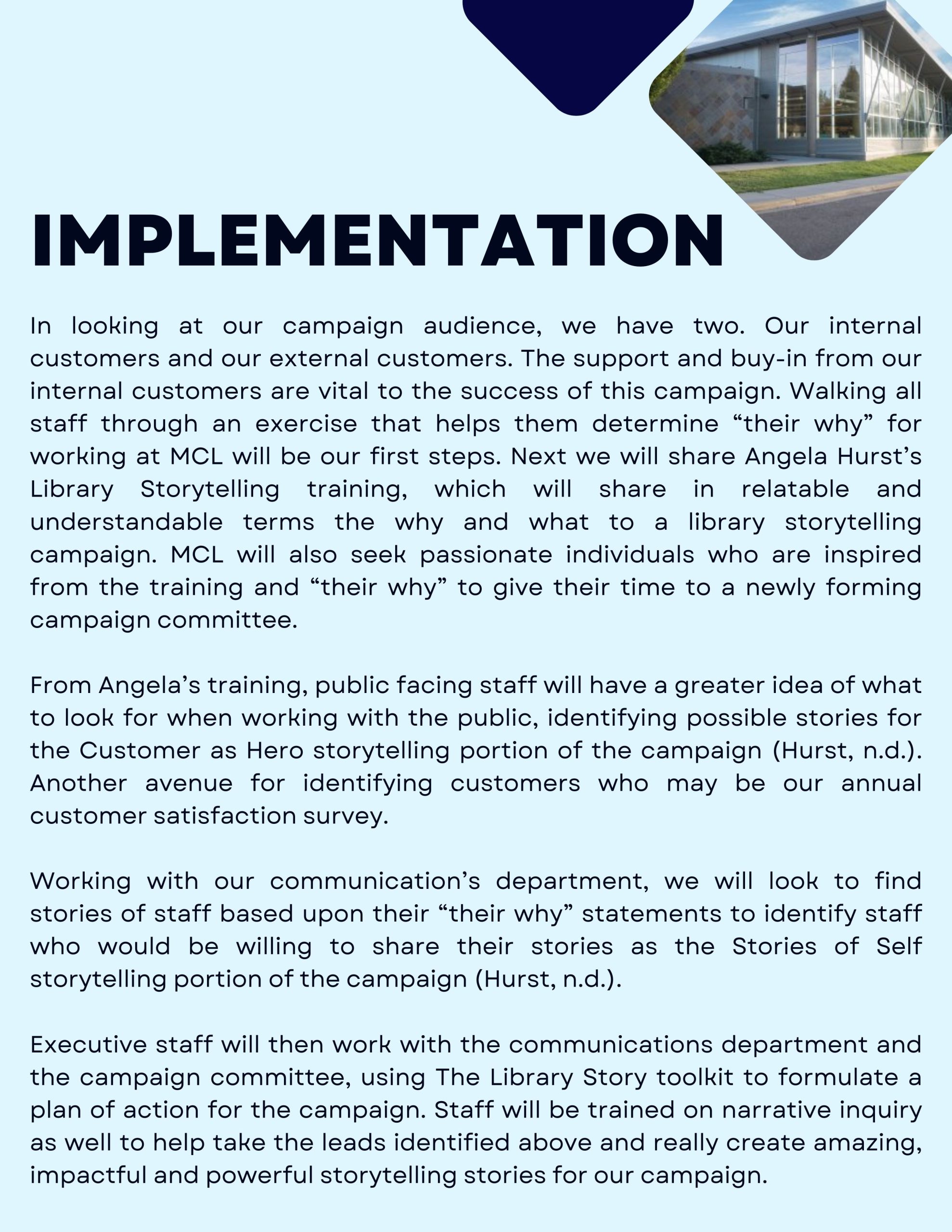
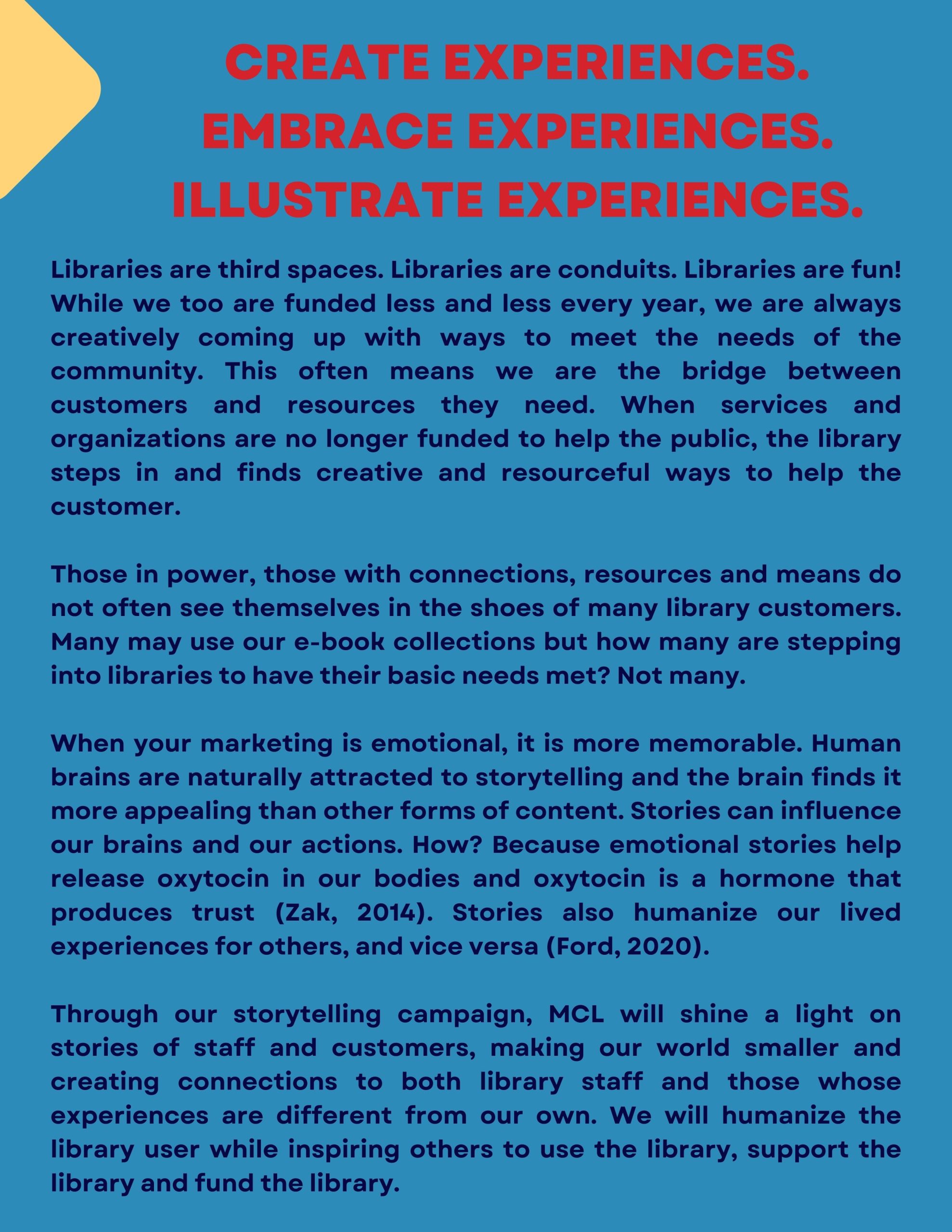
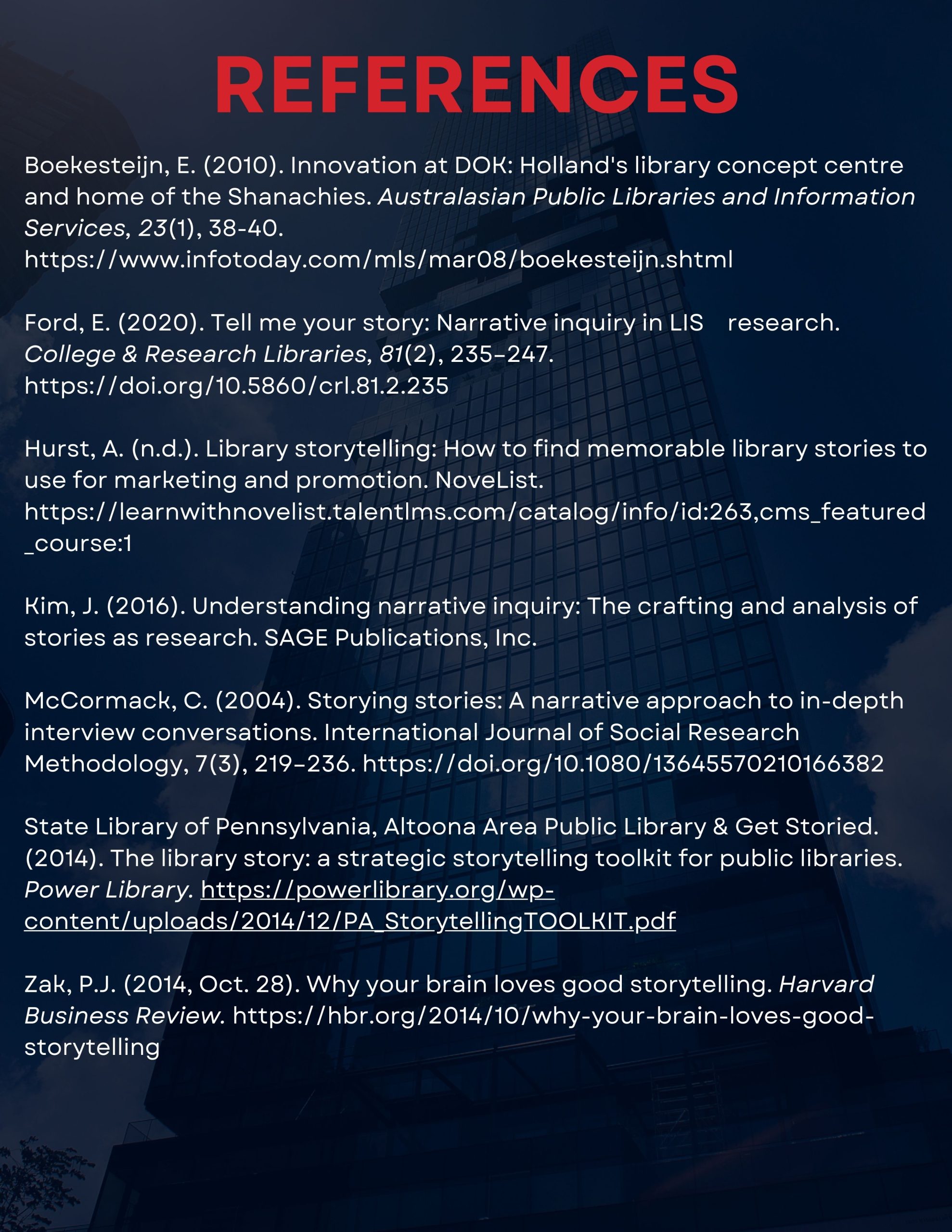
Having worked in public libraries for close to 5 years, one of the things I love the most about working in public libraries is that we do not compete against one another. Not only do we freely share information, knowledge and expertise with our customers, but we also freely share our first-hand lessons learned, work examples, great wins and losses and more. When our system was looking at reciprocal borrowing, we asked other systems in our state how they created their policies, what were things they wouldn’t do again, what were the wins, and anything else they were willing to share. Our system also looks to another district that serves multiple counties for information they are willing to share. They create amazing marketing materials, both in format and in content.
A particularly challenging area for our library system is the variedness of our branch staff. We have 12 branches across our system and they are rural and suburban. One branch is as small as a shipping container and our largest is approximately 35,000 square feet. Just as the size of our branches are varied, so are the people who work in these branches. I really appreciated the different types of learners detailed in The Strategic, Curious & Skeptical Learner : Australian Public Librarians and Professional Learning Experiences by Professor Stephens et al.
A few branch staff who work in our more rural branches tend to demonstrate some of the skeptical learners’ behaviors. They feel they know their branch, customers and surrounding service area the best, and do not often feel that the training and educational opportunities provided to them apply to the rural areas and themselves. Meanwhile staff within the larger branches in the suburban areas tend to align themselves more with library policies and procedures and find more value in the PLEs offered.
Below is a Pew study that illustrates the how people feel understood by those who live in a differently populated community.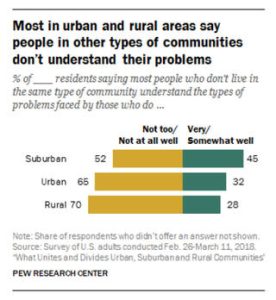
This is a fine line our system was to walk – respecting each branch manager and their community. However, to ensure that each customer receives the same customer service and product, no matter the branch, continuity is important when we are looking at PLEs for all staff.
Facing History & Ourselves. (2024). How urban, suburban, and rural communities view one another: Pew Research Study. Facing History & Ourselves. https://www.facinghistory.org/resource-library/how-urban-suburban-rural-communities-view-one-another-pew-research-study#citation-information-59389
Stephens, M., Partridge, H., Davis, K., & Snyder, M. (2021). The Strategic, Curious & Skeptical Learner : Australian Public Librarians and Professional Learning Experiences. Public Library Quarterly, 41(3), 257–272. https://doi-org.libaccess.sjlibrary.org/10.1080/01616846.2021.1893114
Reading Erin Wentz’s article on the The Human Library reminded me of a library system located in Washington. Two hours away from my library system, my fellow library coworkers and I toured Spokane Public’s new Central branch in downtown Spokane and met with their executive librarian. Our goal was to learn a few things from Spokane Public, including how they ran their 2018 levy campaign in conjunction with the school district. From this levy, Spokane Public created a joint middle school library and public library on the school campus, a building with shared meeting/creator space – The Hive, and a new central branch.

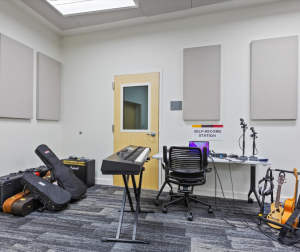

Along with these new buildings, Spokane changed how their librarian model. Instead of the traditional librarian roles, Spokane shifted to staffing community experts as their resident experts or “human library.” Spokane hired people who were experts in a dozen different areas such as music, broadcasting and podcasting, and gardening. The responsibilities include teaching classes, doing outreach, and being on hand to help the public in exploring their curiosities and learning. The main branch remodel spaces to enhance this learning including a video studio, a podcast production studio, a recording space and more. The maker space building had spaces for artist residencies and in turn, the artists provided workshops and art classes for the public.
While this is not a human library per se, I think this is a very intriguing model as libraries shift to focus on what their communities need and want from them, and moving more towards community spaces and human-focused. I also think this model encapsulates a lot of the zones mentioned in Professor Stephens’ Wholehearted Librarianship – the community zone, the creative zone, the curiosity zone and the collaborative zone.
https://www.spokanelibrary.org/
Stephens, M.T. (2019). Wholehearted librarianship : finding hope, inspiration, and balance. ALA Editions, Chicago.
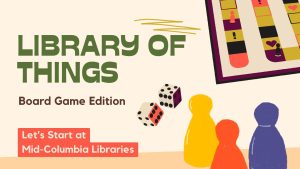
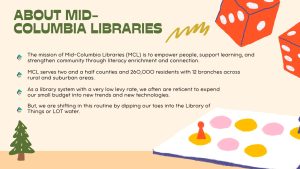
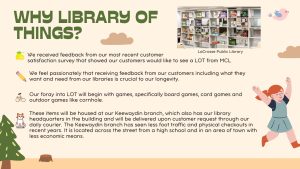
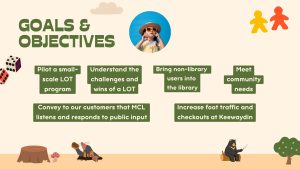

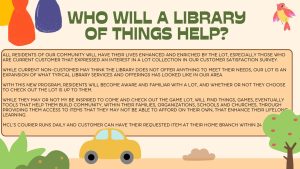
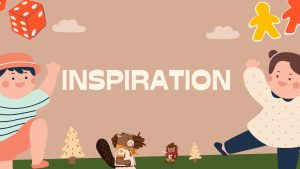
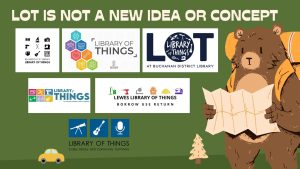
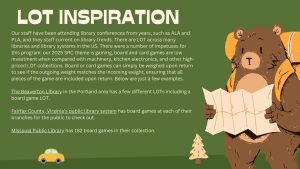

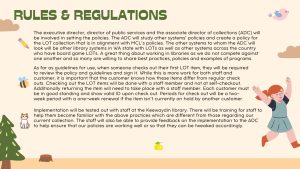
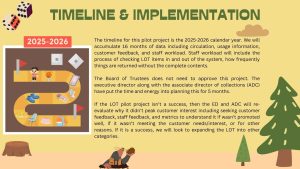
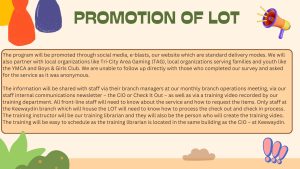
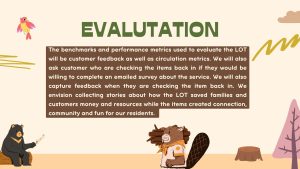
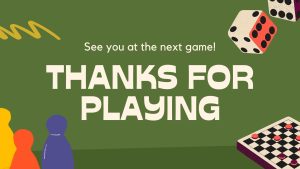
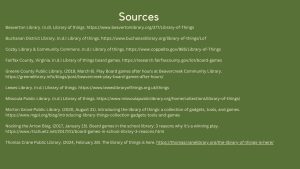
In the readings around new models, resonating with me were the concepts of community engagement, interacting with information in a new way, and bringing people back together and back into the library.
Technology and the internet have allowed many to experience community and access without being physically in person. This has been extremely advantageous especially for those who are unable or unwilling to leave their homes or communities, as well as those who are differently abled. One example of this research I did for an early INFO class where I looked at how the information needs of teenagers. It was a personal research choice as my children are 11 and 14 and I was curious as to how technology impacts the development during the teen years. In my research, I discovered how the internet has allowed teenagers to help seek out people, cultures, identities, and other areas of interest as they explore their individuality and identities. It has allowed teens whose communities or families aren’t conducive to seeking out people, identities or behaviors different from those around them.
On the flip side, technology has allowed people a vehicle to demean, bully, trash, and lie about anything and everything, especially on social media. And they can do so without having to show their face or look someone in the eye. Hot topics as of late include but are not limited to the Covid pandemic and subsequent vaccines, world affairs, and the current political climate and elections.
As I read about Anything Libraries, sweating in stacks, and the 100 great ideas for the future of libraries, I was inspired by the ways libraries were helping to reimagine libraries and the spaces within them, while also incorporating the collection, helping people access information, and other tried and true library attributes.
It also made me think of a post I saw on Instagram. The post had an image of a kit kat bar that was actually a flash drive. The post said how at Halloween, kids thing they’re getting candy but really they are getting a sense of belonging by sharing joy with the people in their community. I love this sentiment and I think it can resonate with libraries as well. By focusing on providing events that allow people to share joy, we can really increase a sense of belonging while helping to counteract the negativity in society today.
Us and Them. The Sun and The Remote. Finding the User vs. The User Finding Us
This post is inspired by how the articles The User is Not Broken and The User is (Still) Not Broken are as true today as they were when they were written.
Us. The Remote. Librarians and Library Staff. We pride ourselves on knowledge. Having it. Attaining it. Knowing it. Gaining it. Storing it. Searching it. Providing it. In doing so, there can be a tendency to shutter ourselves to evolving. We tend to keep doing things the same way we’ve always done them, to be resistant to change and new technologies, to rest on our laurels of being well-studied, well-versed and well-aware. We like routines. Year after year, library land is a cyclical universe: budget season, grant season, summer reading season, Banned Books week, However, we need to remember the message from a title on our shelves – Who Moved My Cheese by Spencer Johnson – that one constant in life is change. We libraries, librarians and library staff must change and adapt.
Them. The Sun. The Public. The Digital Users. The Physical Users. The Non-Users. The Supporters. The Non-Supporters. Where are they? Who are they? What are their characteristics? What are their information needs? How do they get their information needs met? Are we meeting those needs? Technology is evolving every day and so are people. Influences outside of our control are changing our behaviors and patterns. Hello internet, smart phone, Covid, to name just a few.
In order for a library to remain valuable, to continue to serve their communities for many years to come, we need to remember to change, evolve, and adapt. How do libraries continue to be that useful tool and service, acting as the remote, connecting our prize, the people, to their information needs (of which they are aware and also unaware) and desires? A viable library knows their community and their customers and they have their finger on the pulse of their community. While they may not be funded to a level to meet all those needs, but by collection information from their community through customer and staff surveys (both formal and informal), community assessments, connecting with local entities like school districts and nonprofits, we can better use our funding to meet the needs of our community. Because without data, you are just another person (or organization) with an opinion. The library system for which I work performed a community needs assessment in 2022 and we used it to create our new strategic plan and mission. It feels really good to be using a plan and mission statement generated directly from community feedback, I have to say.
In addition to formulating the mission, strategic plan, policies, programming and collection based upon feedback from the community, libraries must prioritize the user and their experience as Schneider wrote in their original 2006 essay. The library website and community outreach are two major avenues that will help center the library as the viable and trusted community hub that enhances lives, connects people to valuable resources both in the library and the community, and allows people to continue their lifelong learning without Amazon, Audible and other for fee entities. While both essays discuss the technological shift of users, Covid heavily changed behaviors after both articles were written, driving in-branch usage down and digital library users up. Library websites need to be a bridge, providing users Google-like ease of use to find what they are looking for without having the author’s name spelling perfected, last name/first name formatting, and Boolean operators to name just a few impediments. As libraries are seeing less in-branch customers, going out into the community, finding people where they are as well as intentionally serving people who need our resources the most will help aid libraries in remaining viable and visible. Outreach at laundromats, nonprofit client events, community events, WIC parenting classes, schools with high free and reduced lunch rates…these are all ways in which libraries can provide our valuable resources and compliment the efforts being made by other entities. As we continue to be funded at a lower rate than ever before, connecting to people where they are at and enhancing and expanding the services they are receiving through our collections, programming and services, means we will remain viable, visible, thought of, and funded.
References:
Kenney, B. (2014. January). The user is still not broken. Publishers Weekly.
Johnson, S. (2001). Who moved my cheese? Vermilion.
Schneider, K.G. (2006, June 3). The user is not broken. Free Range Librarian. https://freerangelibrarian.com/
Hello All,
My name is Sara. I live in Eastern Washington and work for our local library district here as the Associate Director of Advocacy & Development. Before my 4.5 years in this role, I was an executive director of a local children’s literacy non-profit. I love my role within our library, which allows me to build and foster strategic relationships, fundraise, and be out in our community. I also enjoy educating community members on the library bill of rights, freedom to read and other library principles. I look forward to finishing my MLIS degree next term.

A little more about me.. I have two children and they are starting middle school and high school this year. GULP. I enjoy spending time with my children cooking with them, skiing with them and just learning more about who they are growing up to be.
My hobbies include reading romance books, a 6 day a week Crossfit habit, cooking and spending time with my friends. I grew up in Juneau, Alaska, located in the largest rainforest in North America, and now live in a climate that has as many days of sun as Juneau gets rain.
I get a lot of fulfillment in volunteering and serving on local boards. I hope to volunteer with local refugee families with my daughter this fall. A local program, Team Read, is part of the nonprofit I worked with before and the program is used to help refugee students learn to read English.
Random tidbit…I cannot stand Times New Roman and find it terribly hard to read. I’ll write up my papers in another font and then switch it over just before turning in MLIS papers.
I look forward to what this course has to offer this fall and from learning from you all.
Take care, Sara